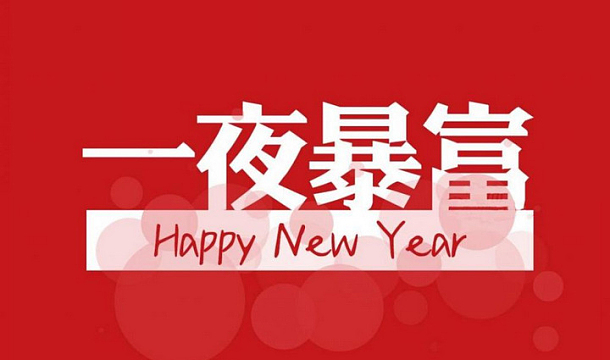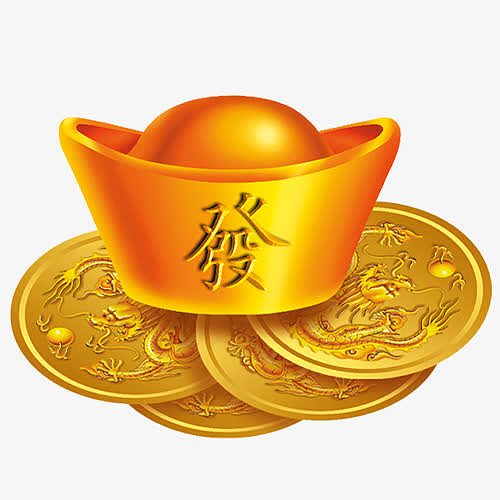
最完整的游泳学习技能
熟悉的水基性教学公式:
1。在水中行走的练习:握住手,慢慢走在游泳池旁,牢固地踩在脚上,稍微向前倾斜,向前移动,然后转身。
2.练习将头浸入水中并屏住呼吸:握住游泳池旁,用嘴吸气,在窗帘中慢慢放下头,在水中轻轻呼气,然后在呕吐后释放水。不要用鼻子吮吸它。
3。握住膝盖并漂浮:吸气嘴,降低头部,握住胸部并紧紧握住膝盖,像冬瓜一样在水中浮动,踩在脚上,然后抬起头。
4。滑下底部:用脚牢固地站立,向前伸展双手,首先向前伸出嘴,然后用双脚向前推动池塘的底部,向前倾斜和漂浮,将双腿放在一起,将腹部向前,然后像船一样冲向前进。
5。在墙上滑动:一只手支撑和另一只手,用一只脚站立并缩回腿部,先吸气,然后缩回腿,向前倾斜上身,降低头部时间,身体在水面上流动,手臂向前滑动。
蛙泳学习技能
蛙泳的技术联系分为:1。蛙泳身体姿势2。蛙泳腿技术3。蛙泳手臂技术4。蛙泳合作技术
1。蛙泳身体姿势
当蛙泳在游泳时,身体不会固定在一个位置,而是随着手和腿的运动不断变化。当动作周期结束后,身体应张开胸部,稍微拧紧腹部,稍微折叠腰部,将腿闭合在一起,尽可能伸直手臂,拧紧脖子,将头放在手臂之间,并聚焦它的眼睛在正面和底部。整个身体应使用身体的水平轴作为轴进行跌宕起伏。
2。蛙泳腿部技术
蛙泳的腿部运动是将身体向前推动的主要驱动力之一。它的主要动作链接可以分为四个阶段:腿部撤回,脚转弯,夹紧和滑动。这四个链接是紧密连接的完整动作。
1。腿关闭
当您开始缩回双腿时,吸气时自然会降低腿部。同时,您的膝盖会逐渐自然地分开,并且您的小腿将向前缩回。回收时,您的脚将放松,脚跟将靠近您的臀部,您将被缩回并分裂。缩回腿部时的强度应该很小。缩回腿部时,应在大腿的投影部分中缩回腿部和小腿,以降低回收过程中的电阻。
腿部收回完成后,大腿和躯干的角度约为120-140度,膝盖的内侧大约与髋关节一样宽。大腿和犊牛之间的角度约为40-45角,犊牛尽可能垂直,这可能有益于转动脚和抬高水。
2。转脚
当腿即将结束时,脚仍在接近臀部。此时,膝关节向内弯曲,脚向外转动,使脚的内侧和小腿面向水的方向。这将增加水面并使大腿变成大腿。充分发挥您的更大力量,并做好积极的准备。
腿部撤回,脚转弯和水升水是一个连续而完整的动作过程。正确的脚部动作是在腿部撤回之前开始之前开始撤退。如果腿翻了脚后略微停滞,它将破坏运动的一致性并增加阻力。
3。采摘水
推水时,您应该从大腿上施加力,首先拉伸髋关节,然后向后推和夹水,然后拉伸膝盖和脚踝关节。
踩踏和夹紧的作用是一种连续而完整的动作,只是先踩下并夹紧水,然后将水夹在后面。实际上,在转动脚的动作中,膝盖向内朝向,脚向外朝向,而唯一的方向是固定的,以踢水。
踏板夹紧效果的质量不仅取决于腿接头运动的路线和方向以及踏板夹紧时水区域的大小,而且最重要的是,它取决于速度和强度的变化两条腿的踏板夹具。水的速度从慢速到快速,功率是从小到大的。
4。幻灯片
踏板和夹紧水结束后,脚处于水平面的最低点。这是车身以踏板的力量向前滑动,然后向下按下腰部,脚正接近水面,准备完成下一个周期。
3。蛙泳手臂技术
蛙泳手臂划桨会产生巨大的驱动力。掌握合理的手臂划桨技术并与腿部和呼吸运动进行协调可以有效提高游泳速度。它的主要运动可以分为几个阶段:开始姿势,滑下(也称为“抬高水”或“抓水”,划桨,闭上手和向前伸出手臂。这些阶段也紧密连接在一起的完整动作。
1。开始姿势时,当施水动作结束时,手臂应保持紧张,自然向前,并平行于水面,手掌朝向下,手指自然而然地在一起,身体形成直线以形成一个直线更好的简化形状。从开始位置滑下(抓水),向前伸出手臂,并将重心向前。同时,稍微向内旋转肩关节,将双手的手掌稍微向外旋转,然后稍微弯曲手腕,然后侧面张开手,然后向下按至底部。当手掌和前臂感到压力时,您就会开始划船。一方面,抓水可以为划桨创造有利的条件,另一方面,它也可能导致身体漂浮并向前移动。抓水的速度根据个人的水平而有所不同。那些具有较高水平的人会更快地抓水,否则会慢。
2。填充双手进行水抓动物并将手臂分为大约40-45度的角度时,手腕开始逐渐弯曲。此时,手臂和手都逐渐积极地抚摸侧面,底部和后弯的手臂。行动。划桨时,手的运动应分为两部分,第一部分:手向外移动,水从拇指流到小手指的侧面。后一部分:手向内移动,水从小手指流到拇指侧。在划桨过程中,前臂和上臂弯曲的角度不断变化,标准是基于施加最佳功率的能力。在整个中风期间,肘关节高于手。手动运动的途径不应在肩膀的后部,而应在肩膀的后部和下方。速度从缓慢到快速,关闭时应达到最快的速度。
3。停止是划桨阶段的延续。关闭时,手的运动方向是向内,向上和向前。蛙泳姿势约为45度。当前臂外部旋转时,棕榈逐渐向内旋转。手提及其运动应有利于快速向前拉伸,肘关节应有意识地向内夹住。当手缩回到头部的前后底部时,双手的手掌会从向内转向向上,这使上臂不超过肩膀的水平延伸线。在整个手动动作过程中,手动运动应保持活跃,快速和光滑。当手关闭末端时,肘关节应低于手,并且大和前臂的角度应小于90度。
4。通过拉直肘关节和肩关节来完成前臂。手掌从一开始就逐渐向上转动,手掌被放在一起并向前延伸,并在结束前逐渐向下转。整个蛙泳手臂的运动路线都是椭圆形的,无论是向上还是向上,都是从小到大的连贯,完整的力过程,从慢速到快速。
4。呼吸方法
1。当手臂开始进行动作之前,在练习蛙泳时,人体的位置,尤其是水中的头部,对初学者具有重要意义。目前(滑动),如果身体高并且嘴靠近水面,呼吸时,从业者的嘴可以更容易地暴露于水面,并且可以在相对较长的时间内完成。水面以完成呼吸。吸入过程。这将对初学者发挥一定的心理稳定作用,这有利于完成吸入过程。相反,如果此时的身体位置相对较低,则嘴巴暴露水面所需的时间将更长,并且嘴巴停留在水面上所需的时间将相应减少。这将对初学者吸入运动的心理完成产生不利影响。
2。在蛙泳训练的早期阶段,强调:“频率缓慢,游泳速度低,小风,明显的滑动和滑动运动。”根据相关信息,深入水中吸入时人体的比重约为0.96。呼气时,达到0.99,增加到1.02至1.05。因此,滑行时屏住呼吸有助于身体漂浮,同时在滑行时呼气可能会导致身体下沉,这不利于吸入运动的完成。
3。对于初学者来说,由于学习游泳的时间有限,在教学中,当初学者的腿部运动不是很熟练,以便匆忙。在完整的蛙泳协调实践中取得了进展。目前,由于初学者在蛙泳夹紧方面的影响并不理想,因此在滑动时,身体在水中的位置更可能降低,并且更难完成吸入。总而言之,当从业者完成呼吸协调时,人体在水中的位置的高度将直接影响他的心理和呼吸质量。同时,在蛙泳呼吸协调实践中应完全注意这一点。
在蛙泳呼吸教学中,滑行时应集中于身体相对位置的关键问题:
1。掌握正确的呼吸方法。在进行完整的蛙泳训练之前,您必须掌握正确的呼吸方法,以便在短时间内完成吸入过程。方法是:从小到大,逐渐增加呼气量(同时呼气的嘴和鼻子)。一旦嘴暴露于水面,就立即硬呼气。在嘴里迅速而深入吸气,呼气在吸力之间没有停顿。
2。调节身体在水中的位置。使用两个到多个腿部运动,并结合一只手臂运动和一口气进行练习。主要是要使用两个甚至多个腿部运动来调整踏板捏后身体在水中的问题,以便初学者可以尽快掌握呼吸方法,减轻他们的心理压力,然后再次呼吸,手臂和腿练习正确的运动协调。
3。屏住呼吸,滑动,呕吐并吸吮全部。进行完整的呼吸协调练习时,需要从业者屏住呼吸和滑动,在滑动时开始呼气,并逐渐增加呼气量。一旦嘴暴露在水中,请立即呼气。没有停顿,请深吸一口气。然而,在练习期间,许多重点都放在早期或晚期吸入的方法上,而是“甜和饱满”的地步。
5。转弯技术的要点
竞争规则规定,当蛙泳转动时,双手应同时触摸水面,在水面或水下的壁,肩膀应平行于触摸墙之前的水面。同时,运动员在转身后仅限于在水中进行一只手臂和一条腿潜水动作。由于严格要求规则,因此蛙泳的转弯比其他游泳风格稍慢。转弯方法通常仅使用抬高头和吸入的方法。
以左转为例,蛙泳转弯技术如下:
1。触摸墙:运动员在泳池墙附近游泳而没有放慢脚步后,将手臂向前伸到他的前方,在身体的重心上方,右手在上面和左手在下方,双手相距约15厘米,他的手指朝向左侧的墙壁上方。
2。转过身:触摸墙壁后,用所有的手掌按泳池墙,将肘部和膝盖弯曲到惯性时。同时,您的身体沿着左侧的纵轴旋转,并将头抬到吸气中。您的左手将游泳池的墙壁留在水中,并将身体向左移动。侧向转动,逐渐向左向左延伸。当身体转向面向泳池墙的侧面时,向前挥动头部,将头部降低到水中,将右臂从泳池墙上推开,从空中摆动手臂,抬起臀部触摸您的手臂,向前伸出双手,双腿弯曲为踩踏。
3。打孔墙:将脚的鞋底放在水面下方约40厘米处,将手臂向前拉直,将头夹在手臂之间,然后用力推开泳池墙。
4。滑动和潜水游动动作:撞击墙后,身体以精简的形状滑动。当速度降低到正常的游泳速度时,手开始将手臂延长到大腿的侧面并停止一会儿。当滑动速度稍慢时,腿和手开始关闭。向前延伸靠近腹部,胸部和冥想。当两臂伸出时,踢腿并滑动。当两臂第二次开始划桨时,它们的头会暴露于水面。
自由度学习技能
(i)身体姿势
爬行时,身体容易靠在水面并变成流线型的形状。背面的肌肉和臀部保持适当的张力。游泳时头部稳定。躯干在35゜〜45゜゜゜゜゜〜45°的身体纵轴周围自然地自然地旋转。
(ii)腿部运动
尽管爬行游泳的腿有一定的推进力,但它们主要起着平衡的作用,保持身体的稳定性并协调手臂以使划桨强。腿必须自然连接在一起,脚向内稍微旋转,脚踝关节松动,髋关节用作轴,大腿用于驱动小腿和脚的脚底,腿交替鞭打。上下脚趾的最大振幅约为30至40厘米,最大膝关节为弯曲度约为160
(iii)手臂运动
攀爬是手臂的运动,也是使身体向前驱动的主要驱动力。一个周期分为传入的水,水,划水,流水和空气移动的手臂的阶段。
1。入口水:完成手臂的空气运动后,手会自然放松控制的水。手的水入口点通常位于身体的纵轴和肩关节的前后伸展线之间。当进入水中时,手指自然伸直,闭合,手臂在内部旋转以在最高点抬起肘关节,并且手掌和手被倾斜地降低,以便首先触摸水,然后前臂,最后将上臂自然插入水中。
2.握水:在手臂进入水后,在主动将其向下插入水中,手掌从倾斜向外旋转到倾斜的内部和向后转动,并开始弯曲腕部和肘部,肘部更高比手可以快速过渡到更好的中风。水位置。握住水后,手掌接近水,肘关节弯曲约150°,整个手臂都像大球一样准备划桨。
3.划桨:划船是发挥最大推进作用的主要阶段,其动作过程可以分为两部分:拉水和推水。水持有阶段后,立即拉出水,应抬起肘部,上臂应向内旋转。同时,继续弯曲肘部,使手动运动迅速捕获身体的前进速度,这可以使水运动成为合理的方向并呼叫方向。同时,它还允许主要的肌肉群在良好的工作条件下进入水上的动作,并在肩膀的垂直平面后拉到水,进入水上排水部分,肘部的弯曲程度大约是100゜。上臂处于内部旋转位置,驱动前臂并用力向后推水。同时,将肩膀移回有效的中风路线。向后推水具有从屈肌到伸出的手臂的加速过程,并且棕榈从内部到顶部以及从底部到顶部到大腿的运动路线加速。整个划桨运动,手轨迹始于肩膀的前面,然后在腹部下方,最后在大腿旁边,形成了S形状。
4.流出:笔画结束后,将手掌的手掌转到大腿上,当水熄灭时,小手指向上向上,手臂放松,肘部略微弯曲。由上臂驱动,用肘部将前臂和手向外和从水中抬出,然后将手掌向后和上部转动。水出口的移动必须很快,不停止,应该温柔而放松。
5。空气移动手臂:水出来后立即进入空气移动手臂。移动手臂时,肘部高于手。前臂和手向前驱动,向前向上移动水。运动应放松和连贯。
6。两臂协调:有三种类型的交叉位置,两个臂在爬行期间划桨:前横梁,中间交叉和后横梁。前向十字架意味着,当一只手臂进入水中时,另一只手臂已被向前旋转到肩膀的前部,向大约30゜的平面。前交叉对初学者掌握爬行和呼吸的动作是有益的。中间十字架意味着当一个手臂进入水时,另一只手臂处于向内行程阶段,水平平面为90゜。背部交叉指的是一个事实,一个事实是,当一个手臂进入水时,另一只手臂被切下腹部,手向水平面约150゜。
(iv)手臂,腿,呼吸和协调技术
爬行时,通常在划船的过程中呼吸一次。以向右吸入为例:用右手进入水后,嘴和鼻子开始缓慢呼气。将右臂向下铺在肩膀上,开始向右转动头并增加呼气。当推到右臂的水即将结束时,会大力呼气。当水从右臂出来时,张开嘴和吸气,直到手臂的前半部分在空中移动,然后开始转动头部恢复。然后,直到手臂末端进入水中,有一个简短的过程来保持呼吸,脸部向前转。当头部稳定时,水进入右臂并开始下一个慢速呼气。
爬行的呼吸与胳膊和腿协调。初学者通常使用“ 6:2:1”方法,IE呼吸一次,两次抚摸手臂,然后击中腿6次。这种协调方法很容易保持平衡并协调爬行。游泳技术。
每个运动的练习和指导
(i)腿部运动练习
1。土地模仿练习
(1)坐在水位的位置:坐在游泳池边缘或地面上,用双腿支撑双手,伸直双腿,向内旋转腿以使您的脚趾相反,将脚跟分成八个字符,放松双腿,将臀部用作轴,大腿驱动小腿,然后上下交替。取水。
(2)躺在下面的水中:躺在凳子上,用双腿以另一种方式向上和向下取水,同样的要求如上所示。
2。水实践
(1)容易到暴徒:将游泳池握在手中,或者由同伴,水平姿势支撑腹部,伸直双腿或弯曲腿并取水。
(2)躺在您的背上并得到水:躺在您的背上,将游泳池握在手中,或让同伴帮助您支撑背部水面。
(3)滑动并获得水:练习时,您需要屏住呼吸,伸直双臂伸开,头部夹在手臂之间。
(4)在盘子上打水:练习时,将手臂伸直,放松盘子,将肩膀浸入水中,不要用手按盘子,然后自然呼吸。
(ii)练习手臂和呼吸
1。陆上模仿练习
(1)站立脚,向前弯曲上半身,并进行划桨手臂的模仿运动。
(2)练习与上述相同,结合呼吸。
2。水实践
(1)手臂练习:前后向后或向右站立,向前倾斜,将肩膀沉浸在水中。划船时使用力并在移动手臂时放松。一开始,您可以先练习一臂。一开始,您可以将桨划分为:1。入口水,2。握住水,3。漂流水,4。将手臂移动到空中,然后将其缩短为两节:即,1。保持水和桨,2。将手臂移入水中。移动手臂时,建议强调肘部高于手,并逐渐从一只手臂过渡到两个手臂向连贯的锻炼。您也可以练习手臂和呼吸的结合。
(2)滑动边缘并保持呼吸,并进行手臂的协调。
(3)用双腿捏住水板,滑动边缘,双臂呼吸。
(iii)练习手臂,腿和呼吸的协调。
(1)站在水中,向前倾斜上身以进行锻炼以协调中风和呼吸,在划桨力的帮助下向前移动,然后从游泳池的底部推开,然后从双腿上取水以形成完整的协调。
(2)在边缘滑动并漂浮5-〜10米,并与游泳臂划和呼吸一起进行锻炼。
仰泳学习技能
稳定的身体姿势
尝试使身体平行于水平平面。通过稍微向前耸耸肩,保持脊柱的直截了当。下沉臀部将带来更大的阻力并增加腿部的负载,这将在比赛的上半场消耗更多的能量。克雷兹伯格(Krazeberg)的臀部很高,因为他迅速游泳时在水面上漂浮在更高的位置,保持身体平衡。相反,游泳的速度越快,您的身体位置就越高。
身体的旋转
像滚动日志一样将身体转到侧面。请注意旋转肩膀和整个臀部。将身体的重量从一侧转换为另一侧,例如滑冰或滑冰时。快速转动,使您大部分时间都处于侧面位置,而不是仰卧位。这不仅降低了阻力,而且还充分利用了大型躯干的强度。
手臂移动和水入口
通过将手转向侧面,迅速将您的手从水中拿出来。实际上,肩膀应该比手离开水。如果首先从水中出来,肩膀将遇到极大的阻力。手臂应移至放松并垂直于身体以保持身体的平衡。如果手臂移动得太宽,通常会导致过早旋转,从而导致手进入头部前的水。结果是减慢了速度并影响身体的旋转。正确的水入口点应在肩部延伸线上。
杀死腿
脚踝的柔韧性对于仰泳腿非常重要。腿应狭窄,脚趾应伸展,脚应位于身体部分。飞溅不应该太大,但是脚周围的水应始终通过拍打腿来保持像圆顶一样。使用踢来使身体旋转。请记住,躺在身边的速度比躺在背上的速度快,而爬行的仰泳的协调与自由泳的速度相同。基本技术包括身体姿势,腿部和手臂运动,以及呼吸和运动协调。
身体姿势:仰泳时,几乎水平地躺在水中,胸部自然地伸展腹部,头部隐藏在水中,脸上暴露在水中。游泳时,头部始终保持直立的位置,躯干由于两臂的旋转划桨运动而自然围绕纵轴旋转。
腿部技术:仰泳过程中腿部有三个功能:一种是向前推动身体,第二个是保持身体平衡,第三个是保持身体的高姿势。脚水的量略大于自由泳。抽水时,将髋关节用作支点,并在大腿上施加力,以驱动小腿和脚以用力踢。向上踢时,膝关节略微弯曲,角度约为140°,伸展脚踝关节,向内转动脚,然后强行移动。向下抽水时,膝关节会自然伸直,而高跟鞋之间的最大距离约为40至50厘米。踢时,将脚趾稍微向内旋转以增加踢球区域。
手臂的技术:手臂的技术分为几个部分:水入口,水握,划船,水流和空气移动的手臂,以及以连贯的方式进行的几个运动。当进入水中时,您的手臂会自然伸直,小手指在肩部伸出线的前面朝下,并将手臂切入水中。握住水。将手切入水中后,向下滑到外面,然后向上和向后钩上手掌,同时向内旋转肩膀,向前旋转肘部接头,继续抬起手,继续抬起手,拉动肩带的肌肉使手伸出手。和前臂直接指向中风方向。起搏是行动的主要部分。从身体的垂直轴开始弯曲手臂并触摸40至50°的角度,并且手背部的笔划速度应比肘部快。当划着肩膀时,距水面约15厘米。目前,手,前臂和上臂同时向后推水。当肘部接头接近身体时,向后倾斜水,向上旋转肩膀关节,内部旋转,并在棕榈向内转动并压向大腿时结束冲程。中风结束后,使用棕榈向下压的反作用力抬起肩膀,将上臂和前臂从水中驱逐出去。放松手,在手臂排出水后沿着肩线向前移动,然后将手臂伸直。两臂之间的协调是,当一只手臂进入水中时,另一只手臂从水中出来。
呼吸和运动:因为面部暴露于水面,呼吸相对自然。通常,当右臂从水中出来时吸气,当手臂移至垂直水面时,然后屏住呼吸,进入水后均匀呼气,当手离开水中时手呼气时结束。胳膊和腿的运动通常在每只手臂上进行一次划桨,并吸水6次。
蝴蝶游泳学习技能
1。蝴蝶游泳身体位置
蝴蝶游泳的身体姿势与其他游泳姿势不同,并且没有固定的身体位置。在游泳中,树干的部分和头部不断地改变彼此之间的相对位置。头部和躯干有时会暴露在水中,有时会潜入水中,以波浪形式形成起伏的变化位置。
游泳时,蝴蝶以水平轴(腰部)为中心,躯干和腿有节奏地摆动,腰部和腹部的力点挥舞着。 Then use your thighs to drive your calves, and do the upper and lower whip-shaped water-shooting action together. These movements are closely linked to the movements of the head and arms, forming wave movements unique to butterfly strokes, so the body's resistance is less when moving forward.
2. Butterfly Swimming Leg Technology
The source of power for butterfly swimming is the legs, and the waist is the center of sports. If the legs are not well-matched, no matter how good the waist is, the butterfly cannot afford it. Practicing butterfly swimming mainly involves practicing back muscles, thighs, and calves, as well as your back expansion muscles. Two times, once when the legs are raised, once when the hands are raised in front, once immediately behind, before the rise. When the butterfly swims, the legs are naturally brought together, and the heels are slightly separated into the "inner eight characters". When the legs are pumping downwards in the previous stroke cycle, the feet are at the lowest point, the knee joint is straightened, and the hips are lifted up to On the water surface, the hip joint is bent to about 160 degrees, and then the legs are stretched straight and moved upward. The hip joint gradually spreads, and the hip sinks. When the legs continue to move upward, the thigh begins to press down, and the knee joint presses down with the thighs. The movement is naturally bent, and the thighs continue. Accelerate downwards with the increase of knee bend. When the foot is lifted to the water surface, the hips fall to the lowest point, and when the knee joint bends to an angle of about 110-130 degrees, the foot is lifted up to the highest point, and accurately draw water down and在后面。 When your feet are pumping water down, relax your ankle joints, stretch your feet straight, and then push water back and lower along with your thighs. The feet continue to accelerate and draw water downward and behind. Before the movement is over, the thighs begin to move upward again. When the knee joint is fully straightened, the action of drawing water downward is over.
The water-pulling movement of butterfly swimming legs is completed by exerting force from the waist, through the hip, knee, ankle joints and in coordination with the trunk and spine movements. The direction of movement of the foot is downward and backward. When the downward amplitude is greater than the backward amplitude, the knee joint must be straightened. If it is slightly bent, a great resistance will be created on the back of the calf. Also, do not exert too much force when raising your legs upwards to reduce resistance. The focus of leg punching should be on the downward water movement, and the speed of leg punching downward should be about twice as fast as lifting leg upward.
三。 Butterfly Swimming Arm Technique
The paddling movement of the butterfly swim arm is the main factor in generating propulsion and is larger than other postures. The paddling of the butterfly swim arm is to use both arms to enter the water in front of the head, and at the same time to make curved strokes along both sides of the body. Its technical links are divided into several stages: inlet, holding water, paddling, pushing water and moving arms in the air.
Entering water
The water entry point of the butterfly swim arm is basically on the extension line of the shoulder, and both arms enter water at the same time. When entering the water, the elbow is slightly bent and slightly higher than the forearm, the palm of your hand is ahead, and at an angle of about 45 degrees to the water surface, and then drive the forearm and upper arm into the water in转动。 During the water entry stage, due to the rotation of the forearm, the palm of the palm actively turns from the outside to the outside.
Hold water
After the arm enters the water, the hands and forearms continue to rotate externally and enter the water-bearing stage. When holding water, the direction of movement of the hand is outward-back-down. With the outer rotation of the forearm, the palm of the palm changes from outward to backward toward the backward and then enters the stroke stage.
游泳
When the arm enters the paddling stage, the forearm and palms are the main surface of the paddling. Bend the elbow to keep the elbow in a high position. The forearm external rotation and the gradual increase of the bending of the arm are performed simultaneously. When the arms are drawn below the shoulders, the angle between the forearm and the upper arm is about 90-100 degrees. When the hands are drawn below the abdomen, the distance between the hands is Recently (almost met together), then turn to the water push action.
Push water
When the two hands are closest, use both hands to push water outward in an arc. The direction of movement of the hand is outward-up-backward. In the front half of the water push, the hand has a larger backward movement portion, and the water push route is straighter; in the back half of the water push, the hand has a larger outward and upward movement portion. When pushing water, due to the internal rotation of the forearm, the palm of the palm turns from the stroke backward to the outside backward.
There are three types of exercise routes for paddling and pushing water. This depends on the individual's different physical conditions. Generally, higher-level athletes use the first and second.
从水中出来
When both arms push water to both sides of the hip joint, use the inertia of pushing water to lift the elbow out of the water. The elbow lifting and water extraction action begins before the end of the water push. Before the push of the water between the arms has ended, the elbows have started to lift upwards, and the palms are facing outwards and backwards.
Air move arm
After the water is pushed and lifted out of the water, the arms will move forward from the air. When the arms are moved, the elbow joint is slightly bent, the palms are facing upward, the elbow comes out of the water before the hands, the arms are relaxed and rotated inwardly, and the lower parabola on both sides of the body are in front of the low parabola on both sides of the body When the swing starts to move the arm, use the centrifugal force of the arm to swing forward. The speed should be fast when moving the arms, otherwise the body will sink.
4. Butterfly stroke coordination technology
The coordination of arms and breathing
Butterfly's breathing is caused by the back pushing water with both arms paddling, and at the same time, the back muscles need to be extended greatly to inhale when the head is raised to the mouth and exposed to the water surface. The speed of inhalation should be fast, and the head must return to its original position before the arm enters the water, exhale slowly or exhale after holding it a little.
The breathing of butterfly stroke is usually one stroke at a time, but in order to speed up the swimming speed, you can also use more than two strokes and then do another breathing technique.
Coordination of arm and leg breathing (ie complete coordination movement)
The combination ratio of butterfly swim arms, legs and breathing is generally 1:2:1, that is, one arm movement, two leg movements, one breathing. Of course, in some cases, there is also a technique of doing N (N>1) arms and legs to do another breath (the following figure shows the technique of doing two arms and legs to do one breath). The strength of the two leg beats is usually light the first time and heavy the second time, so there must be some difference.
The complete coordination technique is to do the first downward thrust when the two arms enter the water. When the arms are held downward, the legs are raised when the arms are held downward. When the arms are streaked under the abdomen, start the second downward thrust action and raise your head to inhale. When the water is pushed, the leg is also finished when the arm is moved upward. When the leg is moved, the leg is ready to perform the next cycle of leg punching. The front of the arm is moved, and the head is still on the water surface. When the arm is moved, the head is lowered when the arm is moved across the horizontal elbow of the body.
After reading the most comprehensive swimming learning skills, do you have some understanding of swimming? Everyone should go to the cool swimming pool to try your skills!

版权声明:本文内容由互联网用户自发贡献,该文观点仅代表作者本人。本站仅提供信息存储空间服务,不拥有所有权,不承担相关法律责任。如发现本站有涉嫌抄袭侵权/违法违规的内容, 请联系本站,一经查实,本站将立刻删除。如若转载,请注明出处:http://fjsjnjy.com/html/tiyuwenda/1477.html



